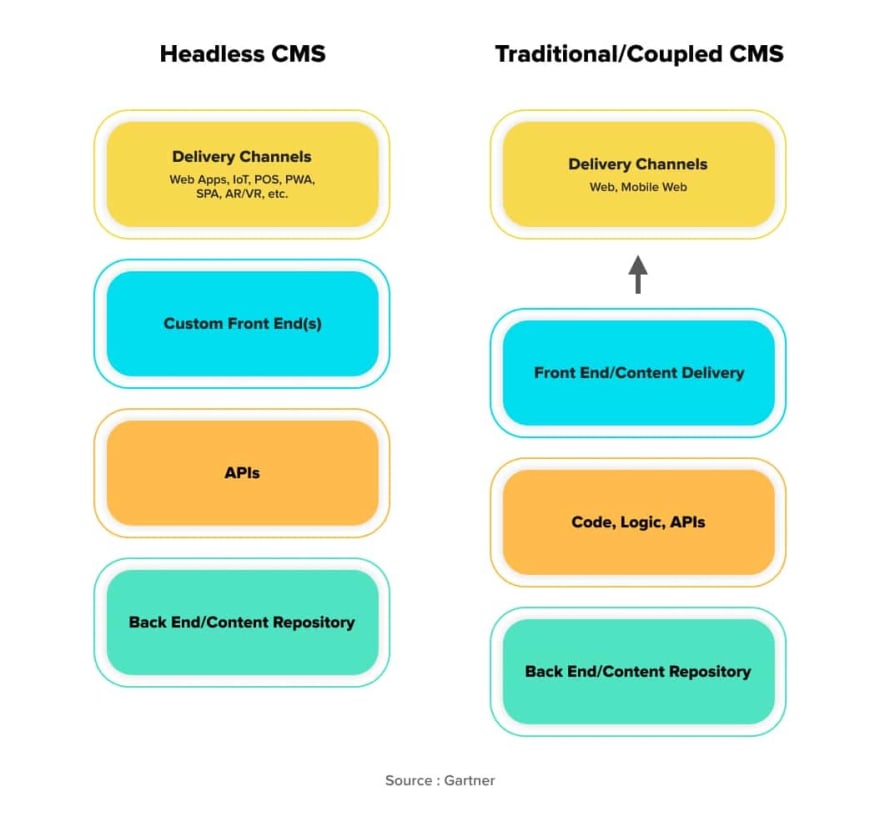Why I can't post on social media regularly
In the social media world there is this term, 'Content is King, and consistency is Queen.' I'm not a huge social media user for my own personal needs, and I know that consistency is my biggest issue with it. Unless I plan an entire campaign, and have 90% of it in the can before launching, I'll most likely fall off the posting-wagon.
What helps me keep my social media posting on track? Strategic planning and data management. There are two critical tools needed here: strategic planning requires a notebook and pen (or a text editor), and data management is greatly aided with a content management system (CMS from here out).
Data drives the digital experience
We are in a world of 'infinite information' according to Raygun, the web monitoring company, and that data has to be stored and presented somehow.
Historically the CMS system was more the domain of large enterprise organizations: hospitals, insurance companies, CPG manufacturers, car companies, etc. Part of the reason for this was the ability to keep a tight control on both the data layer, but also the look and feel of the view layer.
In a traditional CMS stack the view layer is separate, but tied to the back-end systems that deliver data it.
In headless architecture, however, each element of the CMS Stack is its own service.
Who cares about separation of concerns?
I do!
Headless architecture means that we can disperse our CMS and Front-end systems across the cloud, giving us better reliability and easier access.
More than that, separation of concerns let's us parallel-thread the development process: the front-end team can be making pixel perfect React shopping cart component, while the back-end team can finish up credit card authorization integration. If they had a good architect keeping them in sync, they will both be able to just ensure their API end-points are the same and integration should be a simple process.
What is headless first CMS?
In a headless first CMS data and it's delivery end-points are the single source of truth. By creating a flexible data structure the ability to create custom API end-points to serve a variety of platforms becomes the focal point.
By organizing your offering around the data you are working with, you have the ability to dip in and out of design trends and deployment platforms as the business needs dictate.
Use Cases?
In my experience with medium to small marketing clients in marketing and arts, the ability to create a single piece of content, and then massage it for a number of different platforms is critical.
Use case 1: Dance Company Marketing
The Rival Tribe dance company is about to present their evening length ballet, and needs to put a strategic marketing plan in place.
They have a front-end website (React let's say), Social media channels and a scheduling app, a CRM for data collection (maybe Hubspot?), and an email campaign service (like Mailchimp).
Each of these delivery channels has a different format, different copy needs, and especially different media formatting needs.
If Rival Tribe is using a headless CMS with custom built integrations, they will be able to easily create content on the CMS and deliver it via API to their website, create and send a custom email campaign, and integrate it with their email list. All of this is possible because the marketing material - the data source of truth - is coming from the custom CMS API.
Use case 2: Point of Sale and Event Marketing
Motorsports Experience Inc., a motor sports event production company, works with a variety of athlete and racing industry influencers to promote events. They need to find a way to deliver that video content to new audiences.*
We live in a world of screens, and Motorsports Experience Inc wants to have their promotional content on all of them - but for now, they will settle for the video screens at gas-station pumps. It goes straight to an audience who is interacting their product (vehicles) and it will have a high impact because it's a captive audience (in spite of how much we all loathe those screens). But, how do they get their mainly social media content, onto those screens?
Enter the headless CMS API: Motorsports Experience Inc., has been using a CMS to keep their influencer campaigns organized. Thankfully once the campaigns are built in the CMS, custom fields or custom end-points can be added as need to support delivery.
What this means is that the legal department will spend more time hammering out agreements than the developers will spent creating data delivery methods.
I like big orchestras
There is a real beauty in the way complex systems interact with themselves and the systems around them. Monolithic architecture was fine for tight control, but headless allows for more creativity and the introduction of new services without traditional pains of spinning them up.
Coda
As always, if you see something wrong here let me know - we can always do better!





Top comments (0)